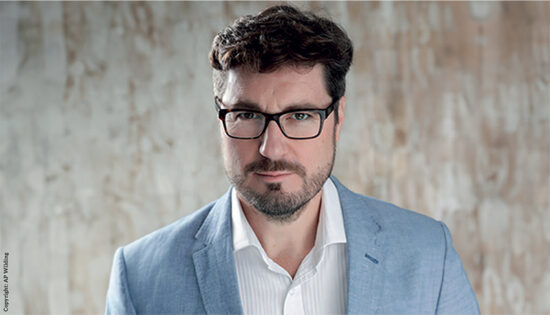With a global managed portfolio business responsible for £2.9bn of assets, Graham Wainer, the division’s global head of investments, and its investment director Julian Howard have wares available in “all colours and sizes” to help meet the diverse tax and investment needs of a broadening client base.
Share classes are available in sterling, dollar, euro, Swiss franc and some smaller currencies, such as the Canadian dollar, all feeding into a pooled fund.
The sub-funds are run as BVI structures, with UCITS versions also open to the onshore investment community, all with “very similar” underlying asset allocation but where the mix of fund managers may be slightly different in certain cases where UCITS formats are unavailable.
With different risk budgets, from a pure fixed income portfolio at one end to 100% equities at the other, GAM’s client base spans Europe and the UK, Middle East, Asia and Eastern Europe; the US does not feature heavily.
Focusing on wealthy private clients but also investing on behalf of charities, foundations and pension funds, GAM has the opportunity to take its investments beyond its own four walls in order to find the best possible solutions.
Further, if ever the team fails to find what it is looking for, it will work with external managers to create a bespoke portfolio. This is what happened with New York state-based Manning & Napier, for example.
“It runs a strategy based on quality stocks, not necessarily value, but with a consistent direction that is less prone to cyclical ups and downs. We wanted a core holding in global quality stocks for the equity content of a portfolio in a world ravaged by uncertainty and risk.
“Yet, when we met with our team, we couldn’t find a fund we wanted. We found a manager running something quite similar so we came up with a set of criteria or thresholds of quality and created the fund with them rather than choosing an off-the-shelf product,” says Wainer.
Similarly, US behemoth Wellington has also taken on a bespoke mandate, the Star Capital Appreciation Fund, which combines three styles – growth, contrarianism and a quantitative approach – the idea being that investors have access to the best of the three at any one time.
“We wanted to create a blended product that was full of the best large-cap ideas. It was also done on a collegiate basis and while we [were initially surprised] they said they would run money for us, being a boutique manager, it was an arrangement we put in place many years ago and it has performed superbly.
“It gives us a broad, blended mix of stock selection from that group that we do not think anyone else is currently offering.”
Belt and braces
Drawing on the macro strategic direction of its investment advisory board, GAM’s investment team underpins its decisions by ensuring it gets the strategic asset allocation right, Wainer says. He is also chair of said board.
It meets formally every quarter and comprises GAM’s asset class experts, joined by Graham Turner from GFC Economics and James Aitken from Aitken Advisors to offer a ‘belt and braces’ approach for navigating the market environment.
From here, the team uses both tactical allocation and fund manager selection – a process based on criteria including quantitative and qualitative research, fees and performance – to amplify their view of the world.
“We might decide we want to be in equities, in US companies, with a growth bias. Our research teams will then draw up a list of about five managers who we would then meet, and from there we would identify one or two to then fit that particular part of the asset allocation paradigm,” Wainer says.
He flags the importance of getting the asset allocation right because if clients sit in the wrong asset class it would take an “exceptionally powerful” fund manager to compensate.
Howard illustrates the point by recalling that last year had a client been invested with the best-performing emerging markets manager they would still have done worse than the worst Japan manager in 2013.
Wainer adds that the fluid nature of the asset management business introduces an extra dimension that can only be tapped in to by his multi-manager research team, describing them as adding “flesh on bones”.
Looking at the group’s absolute return strategy, the GAM Star Flexible Global Portfolio, which the pair claims sits “around the middle” and has picked up the lion’s share of assets to date, currently with £195m in the UCITS version, you get a feel for their outlook.
Equity bulls
Its biggest allocation is 38.5% in long-only global equities, described as a relatively elevated position versus its longer-term average, with noteworthy tailwinds.
“We are quite bullish on equity markets. While not as much as we were in the last two quarters of last year, we are still positively engaged with equities in general. The world economy is recovering, growth and earnings are picking up, positive investor sentiment is returning and there is a lack of availability of any other asset class that looks interesting.”
That said, the pair is mindful that bull runs are not perpetual. “The bull market has run on for a considerable period of time and so the gestation of value has been quite long. There are also legitimate queries about the level of valuations in markets, with many trading at the higher end, depending on how you measure value, which is difficult to ignore.”
This supportive view of equities has been in place since about the middle of 2012, but the significant overweight has been “eked off” for the past couple of years.
When overweights and underweights are discussed, Wainer and Howard explain that while their illustrative benchmarks are cash and the MSCI All Countries index, they are not adhered too rigidly. Rather, GAM “tries to park somewhere between the two” seeking a return, net of fees, of around 6-7% compounded.
Under the bonnet
It is worth reminding investors to look under the bonnet of GAM’s offering as its strategy of prefixing all its mandates with ‘GAM’ when they are run by external managers may lead some investors to think they are all fettered funds rather than such international powerhouses as Wellington, for example.
Seeking diversification and flexibility is key to GAM’s approach. With GAM Star Global Quality, for instance, the team at Manning & Napier was able to add a more cyclical bias when quality fell out of favour, meaning it could still keep pace with the market.
“Rather than sticking dogmatically to their style, there is some give and take around the edges, which is important to us.”
There is no “pecking order” in place to decide whether the team selects from GAM’s in-house range or third parties.
They claim to value many of their peers as managers and appreciate the greater transparency that comes from searching in-house, but insist they look at everything holistically.
Despite the markets’ broadly bearish view of fixed income – something the team is well aware of – they feel certain contrarian bets could deliver.
“The insurance-linked bond, or catastrophe bond, sector is very unique. These instruments have no obvious connection with economic activity, process and performance because they are dependent on ‘perils’ such as Californian earthquakes, European wind storms or hurricanes in the Mexican gulf,” says Wainer.
As strong a view as they might have of a particular fund, manager or asset class, they are careful to never fall too much in love and see a holding as a guaranteed performer.
“We stay clear of infatuation. You have to always be cognisant that when something finally happens you aren’t taken by surprise – you always have to have in the back of your mind that thin ice is out there somewhere.”








